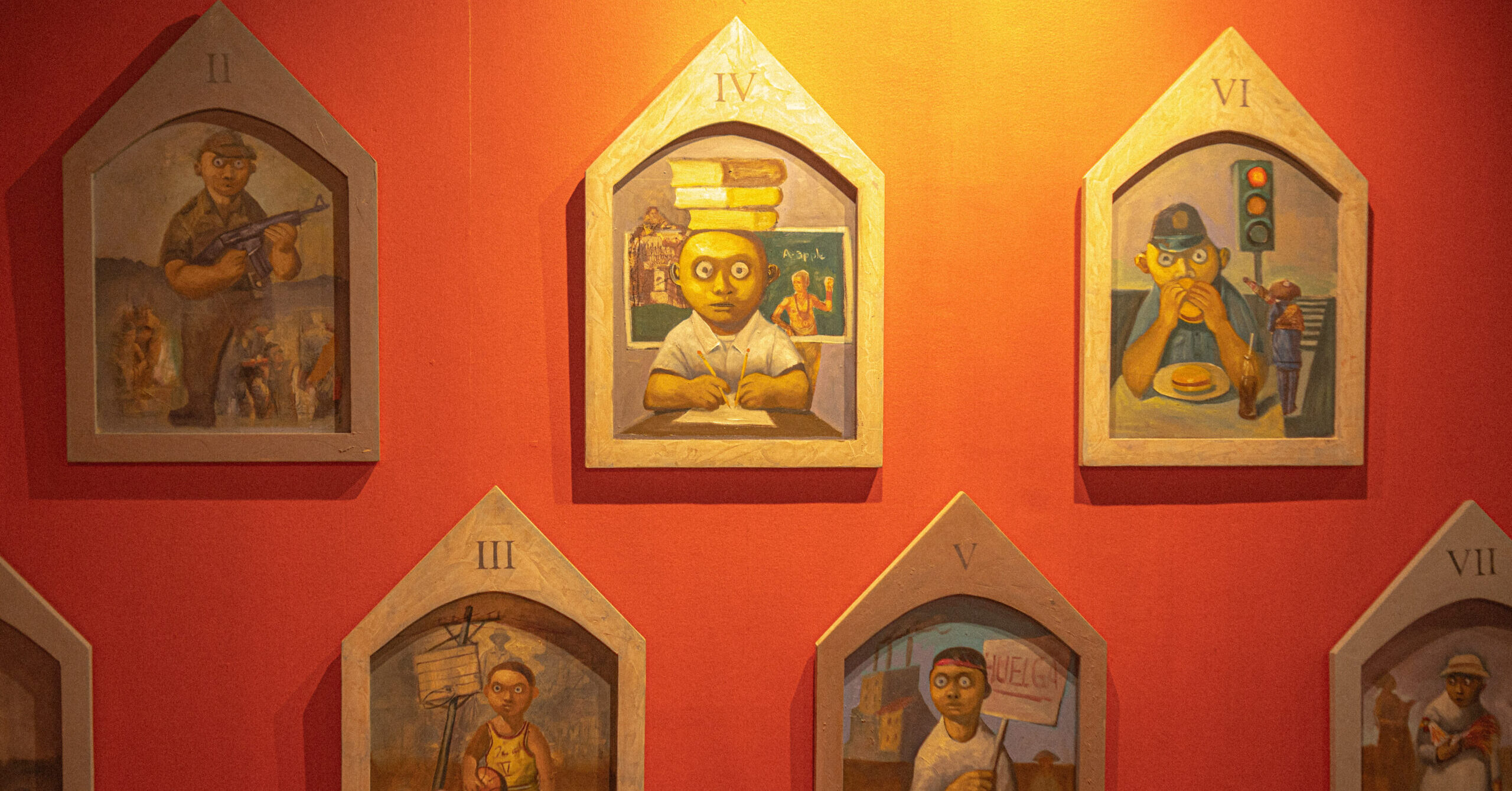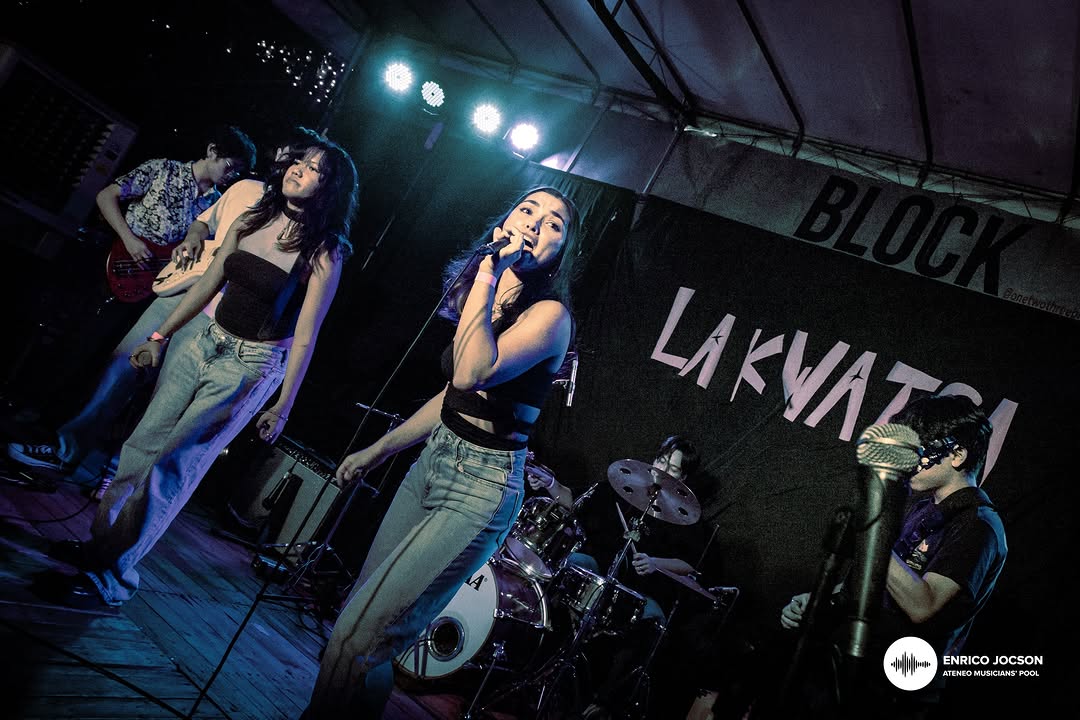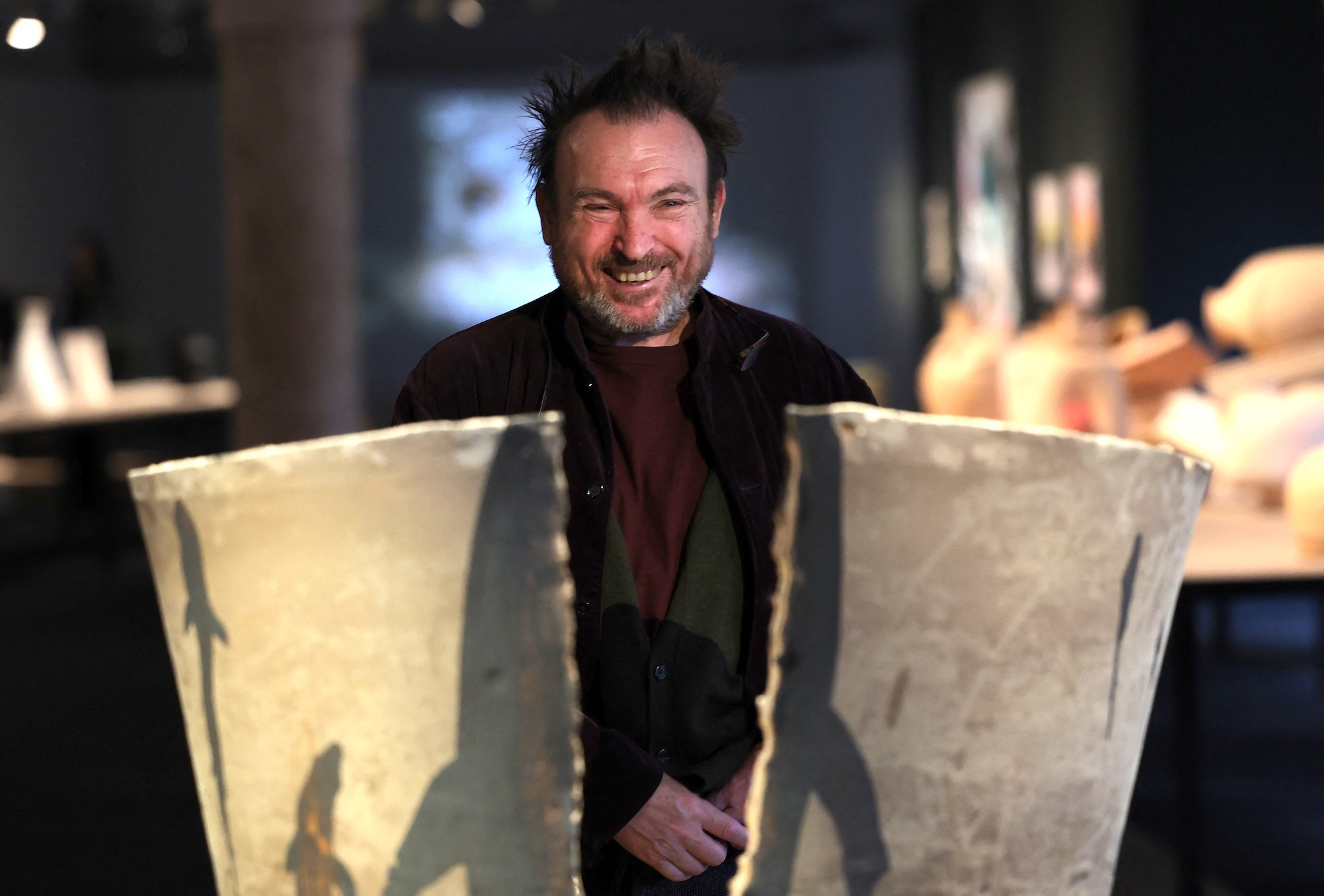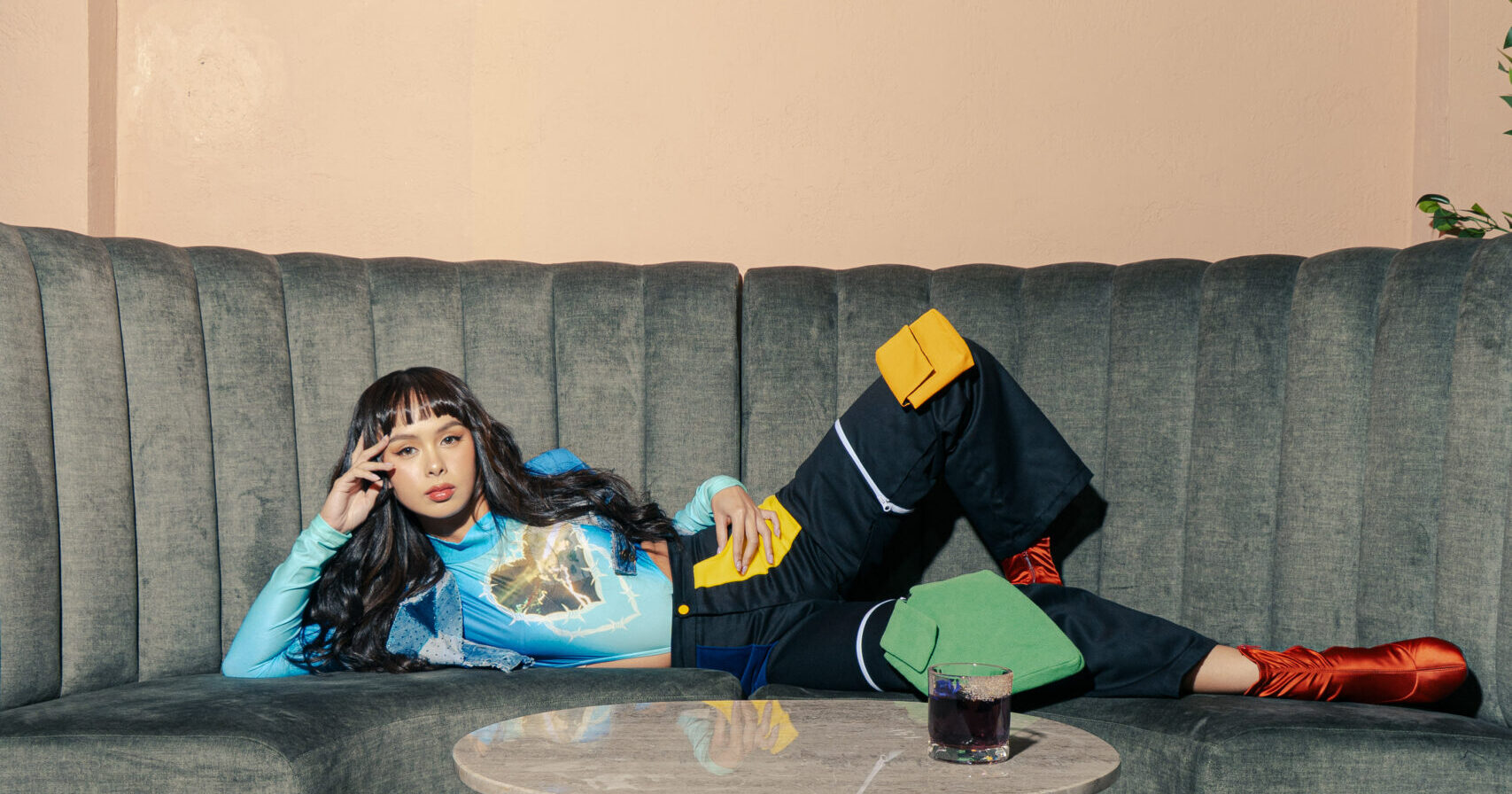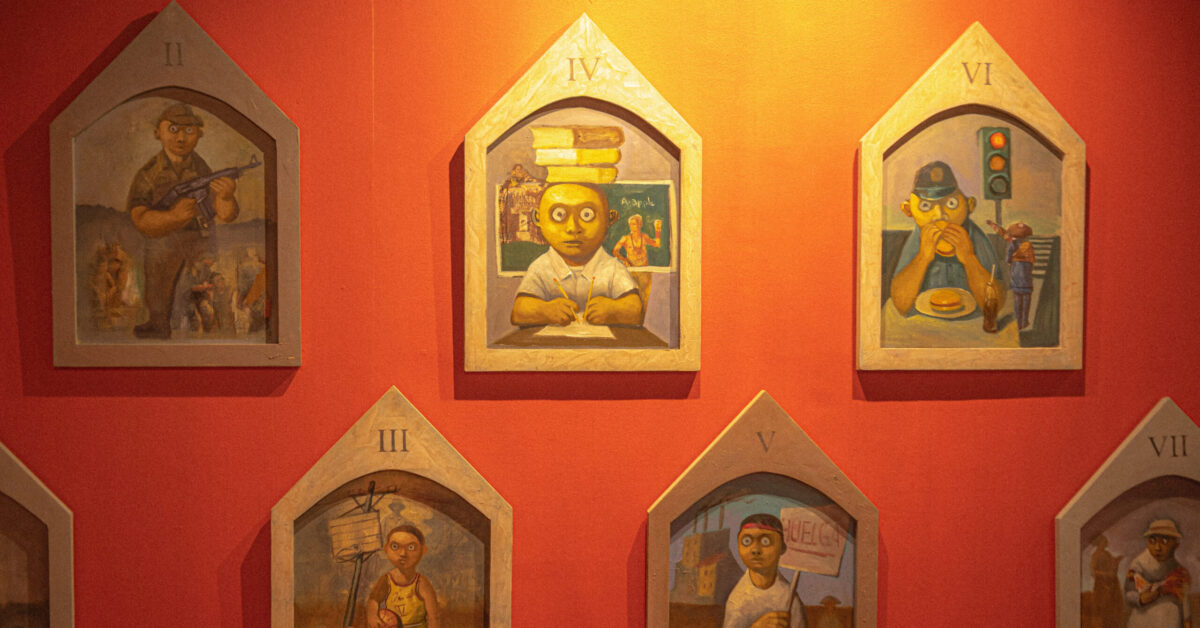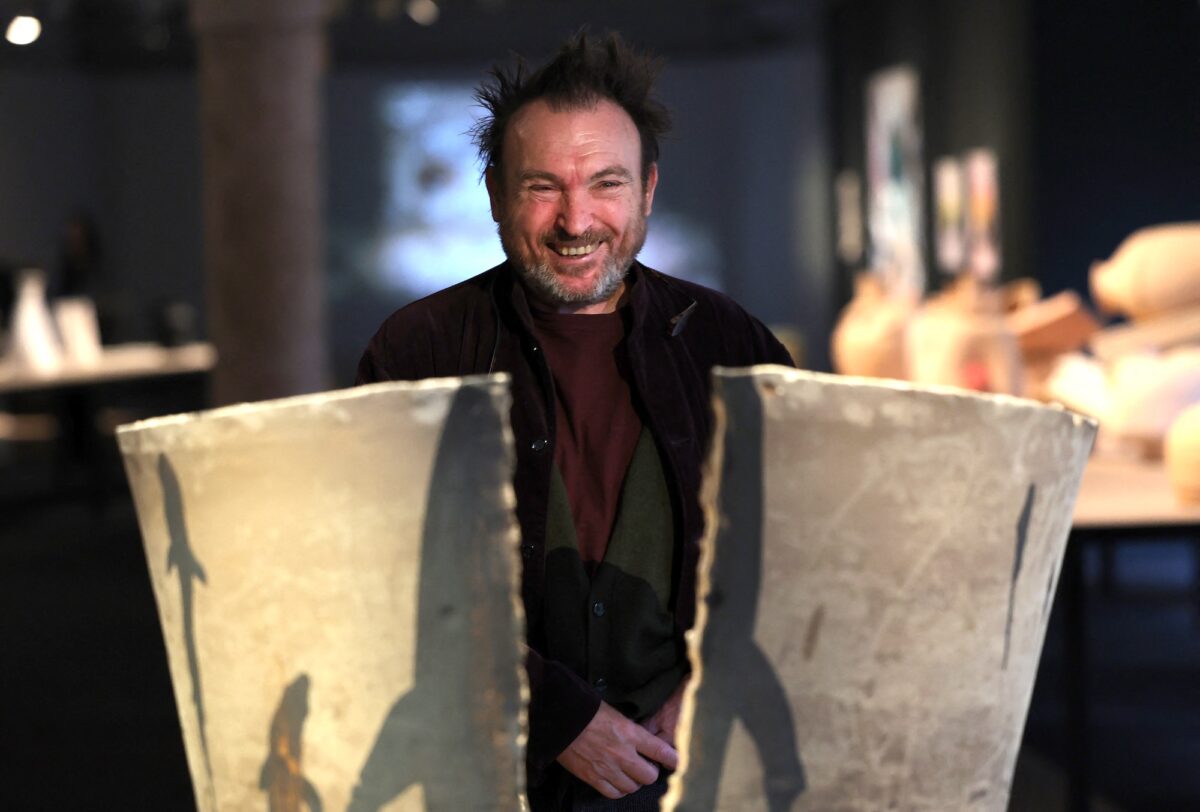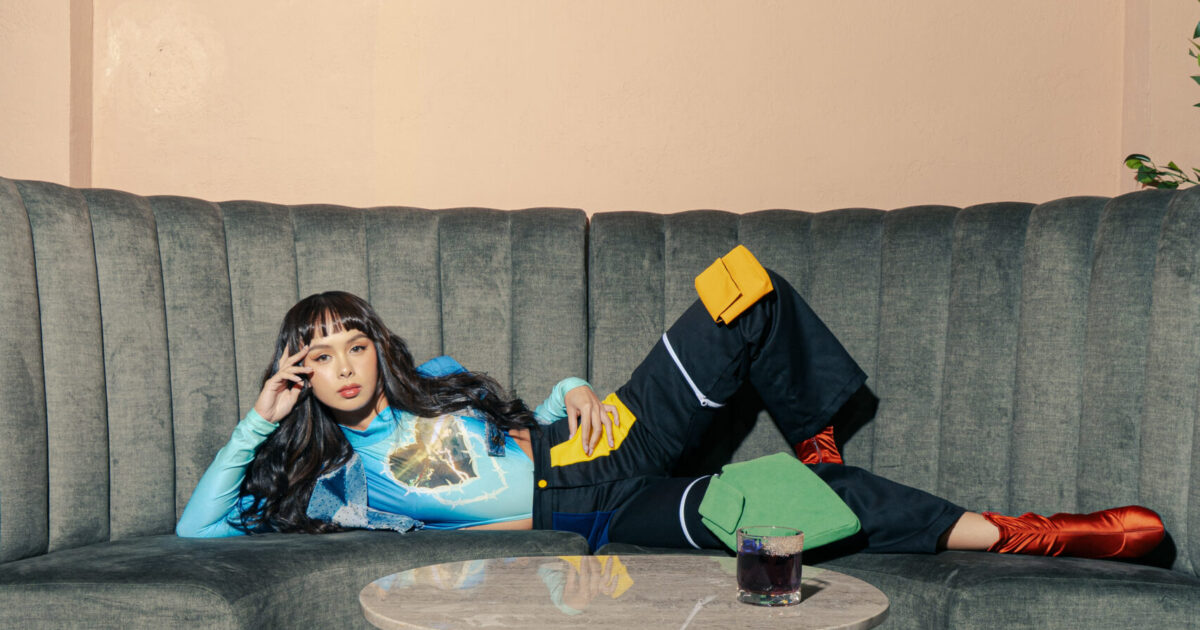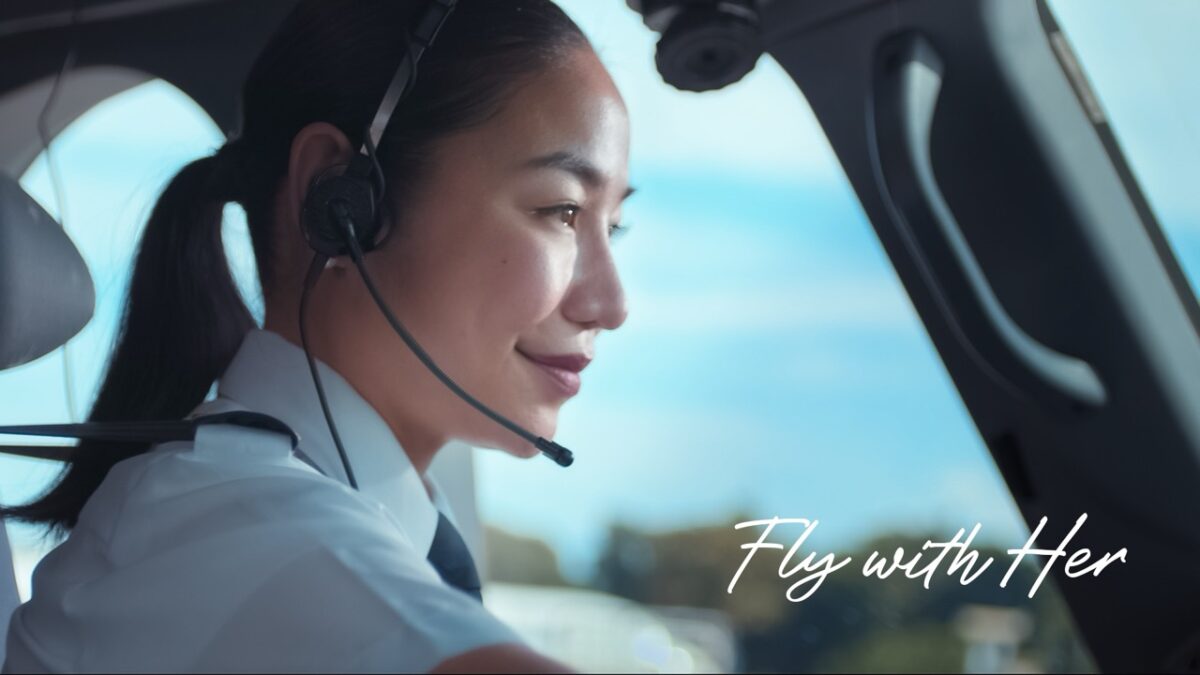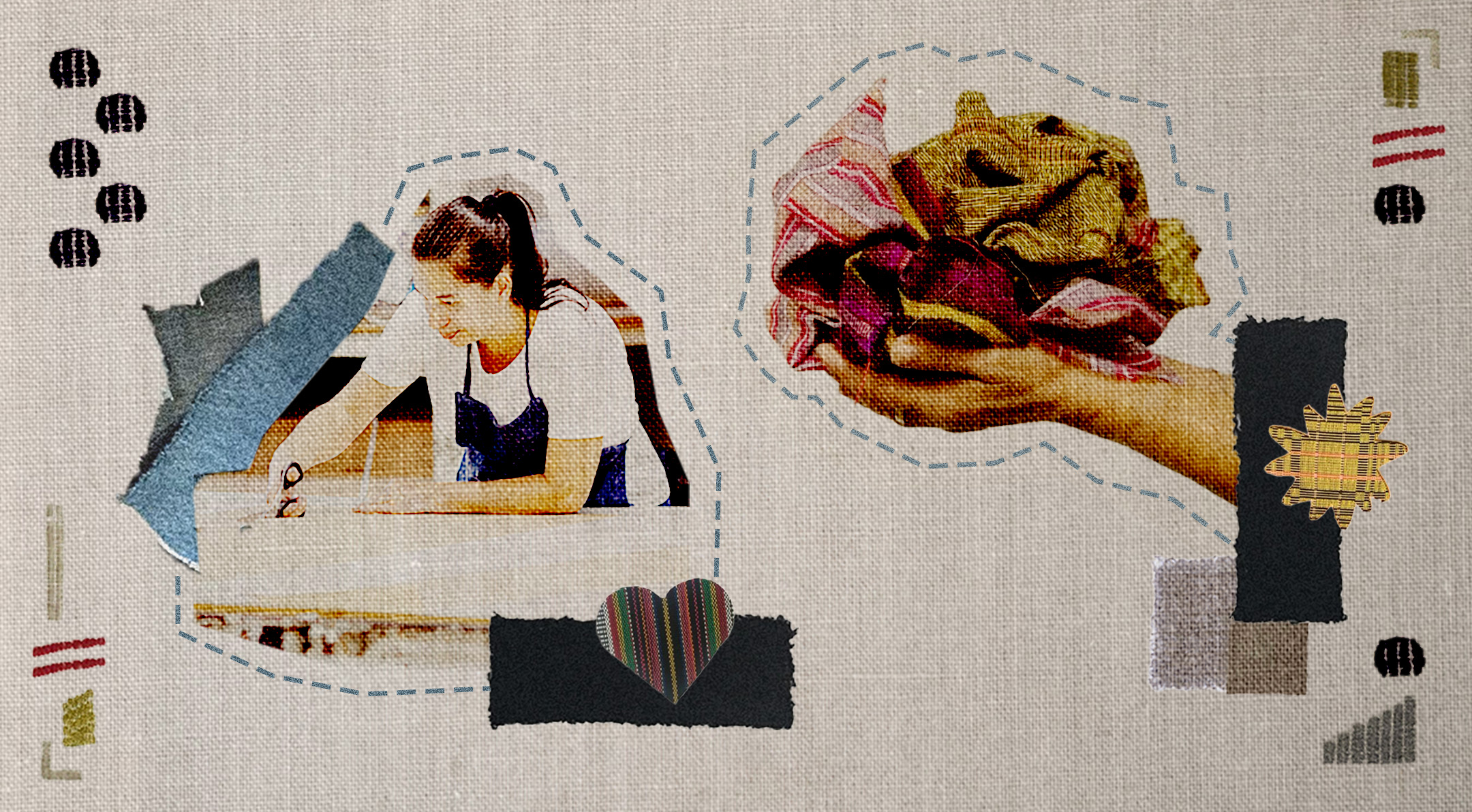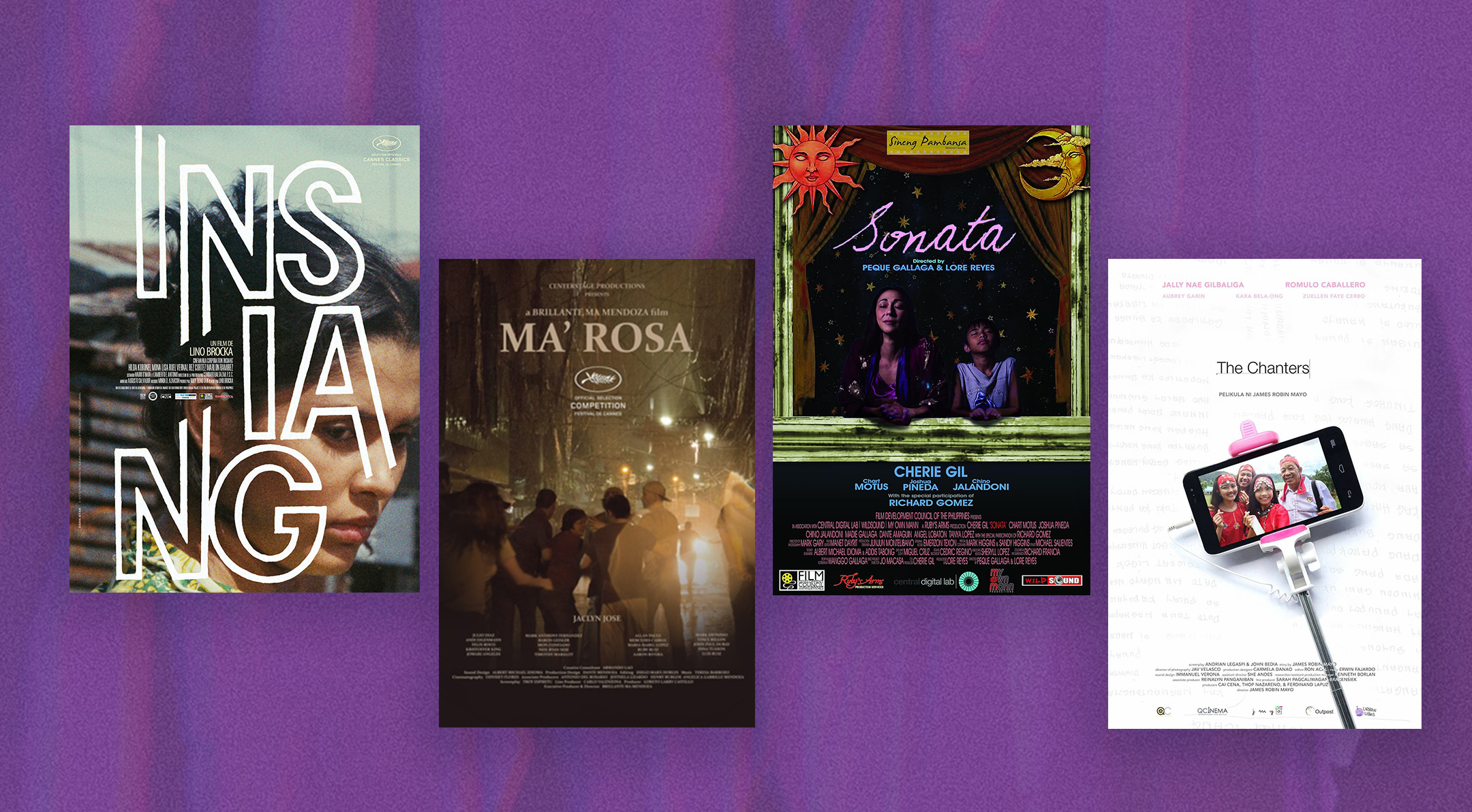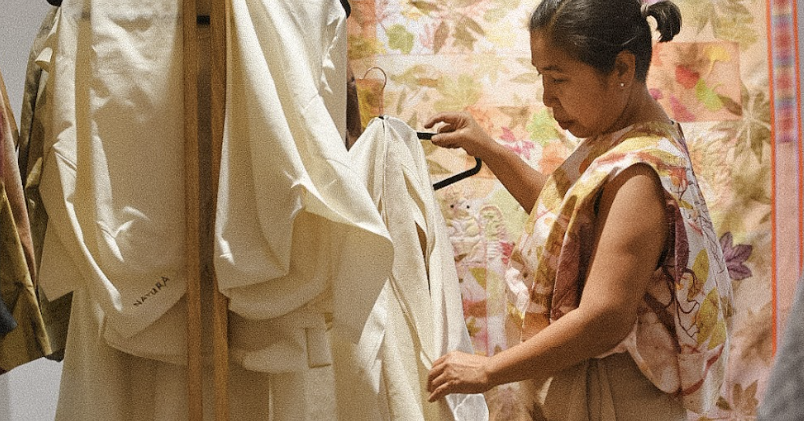Mandy Barker teamed up with La Union-based art residency Emerging Islands to unearth the plastics plaguing our shores and the problems that come with it
Photographer Mandy Barker has been capturing plastic debris on shores around the world for more than a decade now. Her arresting compositions have been published in scientific journals and lifestyle magazines alike and have been shown in the Museum of Modern Art and the United Nations headquarters. Even David Attenborough is a fan, describing “renewed wonder” in engaging with her work.
She captures plastic debris in their “habitats,” in close proximity to sea creatures and bodies of water they’ve tried to choke; other waste she brings back to shoot up close in her studio. Nonetheless, the end products, small and big pieces of colorful plastics against a black background, like specimens under a microscope, are telling: Our oceans are chockfull of them.
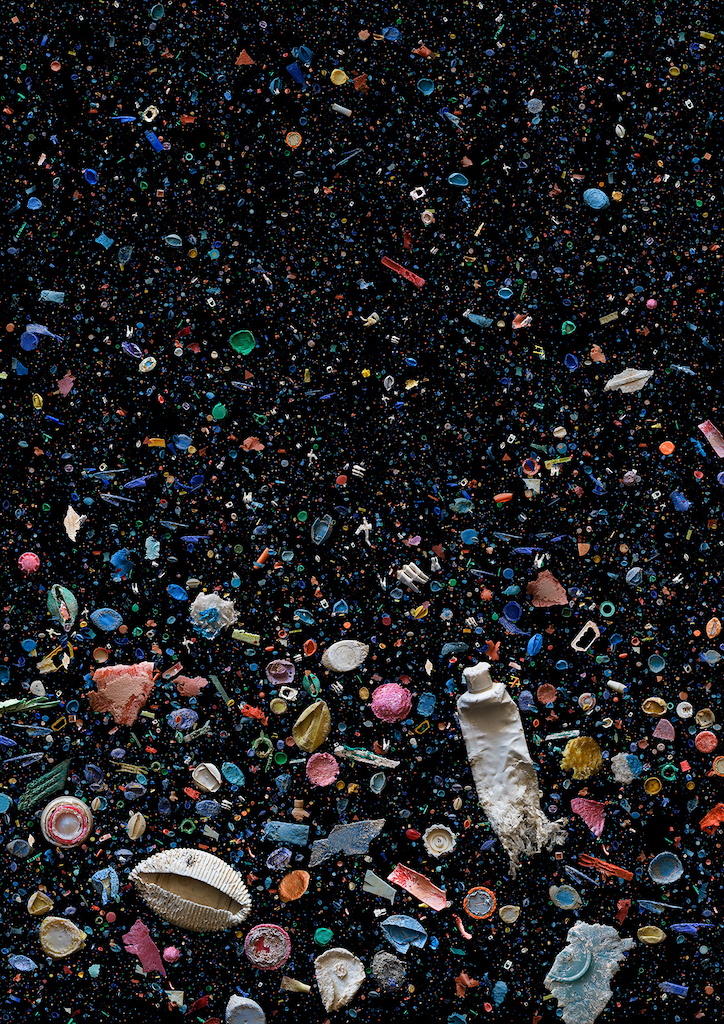
Our country is no stranger to this problem. If studies are to be believed, our waterways are one of the top polluters in the world alongside other global south nations. How convenient.
But to understand how plastic has come to dominate our daily lives, we have to go all the way back to the 1970s, when the sachet economy was introduced to the country. The show notes for Barker’s latest work, in partnership with La Union-based art residency Emerging Islands, reads a confounding reality, one that can help shift the blame from optionless low-income households to corporations: “Multinational companies target the poorest people who rely on single-use items because they cannot afford bigger quantities.”
Products ranging from personal hygiene staples to condiments packaged in single-use sachets allow low-income Filipino families to avail of basic necessities in smaller quantities at a cheaper price. These throwaway containers are used and emptied within the same day (within minutes in some cases) but their effects on the environment, when disposed of improperly, last as long as it takes for them to decompose—up to 500 years.
[READ: Photographer Hannah Reyes explores fashion waste on ‘What We Carry’]
For “DIP Sea KISS” (named after the snack brands whose packaging litters locales), Emerging Islands’ Plastic Passages workshop that ran from Feb. 24 to Mar. 2, Barker worked with locals in collecting these sachets and small packets from the beaches, shorelines, and creeks of La Union, including a nesting turtle sanctuary, mangrove forests, and the Car-rille surf spot in San Fernando City.
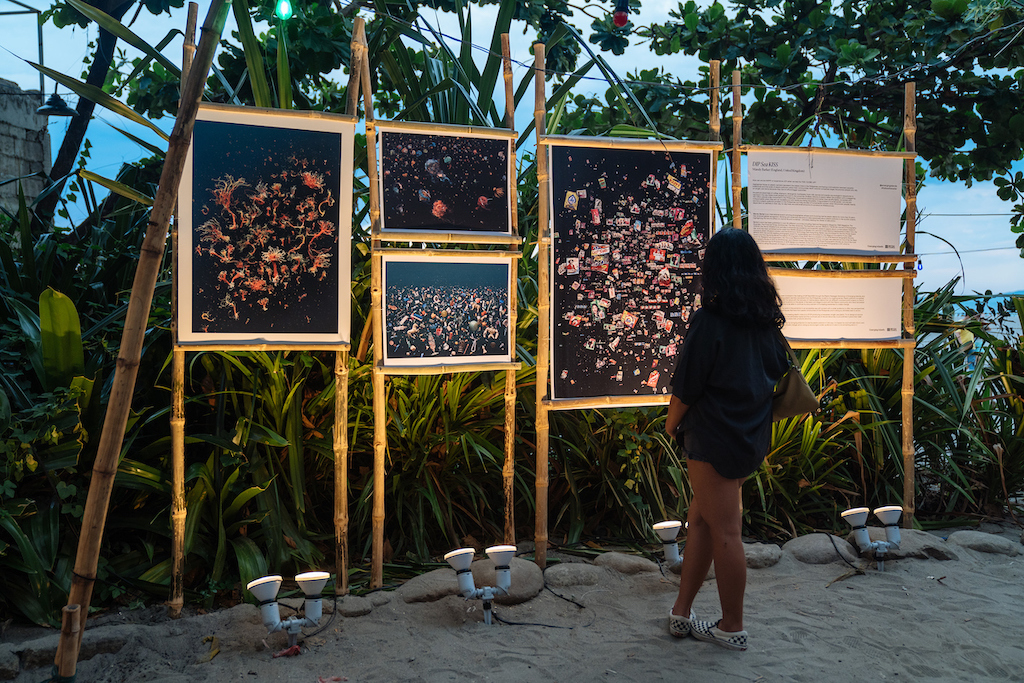
The breadth of “specimens” collected is revealing; personal hygiene product packaging with their branding still intact proves the deathless afterlife of plastic and how there are only a few multinational companies behind them.
Barker is firm in her belief that ending single-use plastic production is one of the most effective ways to solve the ever-increasing plastic crisis, alongside redesigning packaging, championing a circular economy, and enacting policies to make manufacturers accountable.
“It is hoped that by showcasing the work in this exhibition in an accessible way will connect with a wider audience to offer new perspectives and insight into the environmental issues that face the coastal communities of the Philippines, and in doing so ultimately lead to action,” she said in conversation with Emerging Islands.
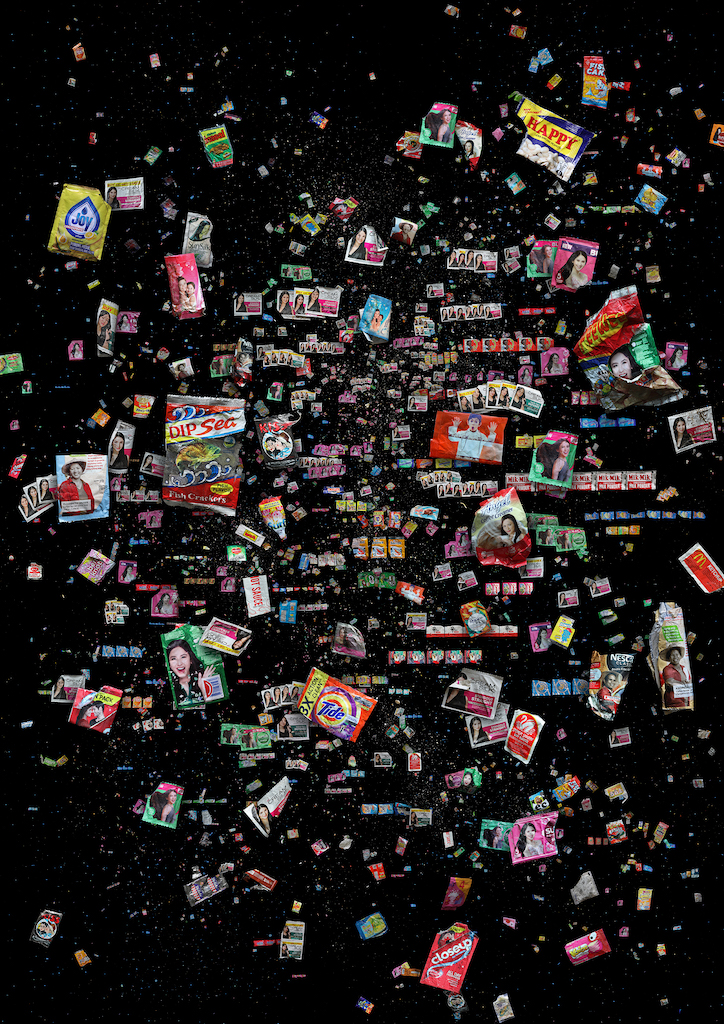
This Earth Day, Emerging Islands is staging an outdoor photography exhibition at Flotsam and Jetsam in La Union called “Follow the Water,” which includes Barker’s latest iteration of her series “SOUP,” alongside works of local and Southeast Asian photographers.
In it, the coastal-based art residency brings the global conversation about art and ecology to one of the very places that desperately need solutions to the issues of plastic pollution and climate change: the surf town of San Juan, La Union.
“It’s time to rethink our idea of society and community to include the non-human beings that share this archipelago with us. We want it to be a source of pride for all Filipinos that the Philippines is the center of the world’s marine biodiversity,” says writer Nicola Sebastian, who worked alongside fellow Emerging Islands member photographer Hannah Reyes Morales for one of the exhibition’s features.
“We were hoping to do more work around water, and the issues around it. Water is a mirror to all of our relationships with each other and the world, including the non-human community we share it with. It traces our migratory movements, our trade relations, our wars, and also our history of exploitation and extraction.”
We caught up with their team to discuss Barker’s work and the advocacy they champion through community and art.
This interview has been edited for brevity and clarity.
How did this collaboration with Mandy Barker begin?
Hannah Reyes Morales (HRM): I met Mandy in the National Geographic Society headquarters a few years ago and her work has been imprinted in my memory since. I remember asking her if she had collected plastic from the Philippines by any chance, and she told me she was hopeful that she someday would. Years later, she did.
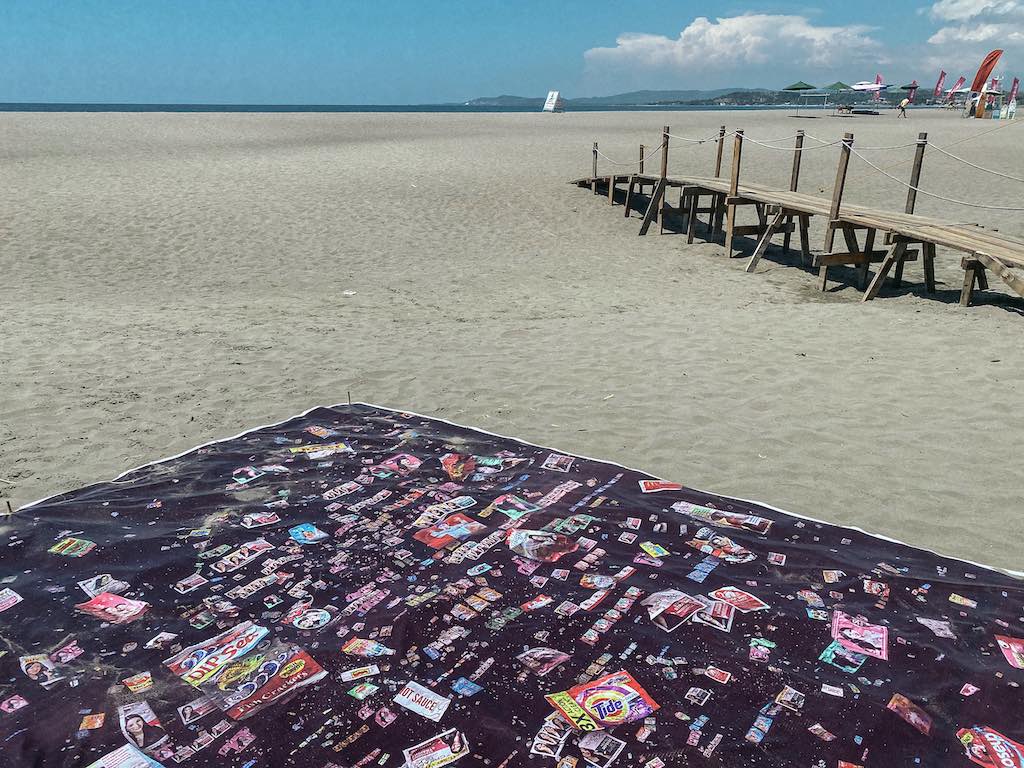
Nicola Sebastian and David Loughran (Emerging Islands): We saw the opportunity that the British Council had opened called “Connections Through Culture,” which funds projects between the Philippines and a UK counterpart, and we shaped this project to fit a genuine exchange between Mandy Barker and Emerging Islands as well as our students.
How did you decide which areas to scout for plastic sachets?
NS: We contacted our community partners first, told them about our idea and collaboration with Mandy, and asked them how best to collect plastic. Celso Jucutan, a professor of environmental governance from the Don Mariano Marcos Memorial State University, La Union suggested we collect plastics from different kinds of waterways in different communities so that it would truly be a plastic transect of La Union’s water cycle.
During one of the mangrove planting sessions in Bauang Bakawan Eco Park with his organization, he and the kids gathered plastic sachets floating around the mangrove forest at high tide, with the help of the local mangrove stewards and fisherfolk association.
We also enlisted the help of Jesse M. Cabanban, the head of the fisherfolk association of Baroro, where the Baroro River, the most important watershed providing water to the La Union region, meets the sea. He told us that a lot of plastics come down the Baroro River from San Gabriel, which they have to clean up.
We also did a beach cleanup with a local environmental volunteer organization called Dalumpinas Oeste Eco Rangers, and spoke to one of its volunteers, Miguel Vargas, about their initiative to reforest their coastline to protect it against storm surges and erosion.
We even collected plastics while we were surfing in Car-rille, a surf spot in San Fernando. We just stuffed the plastics in our bikinis as we paddled out after catching a wave.
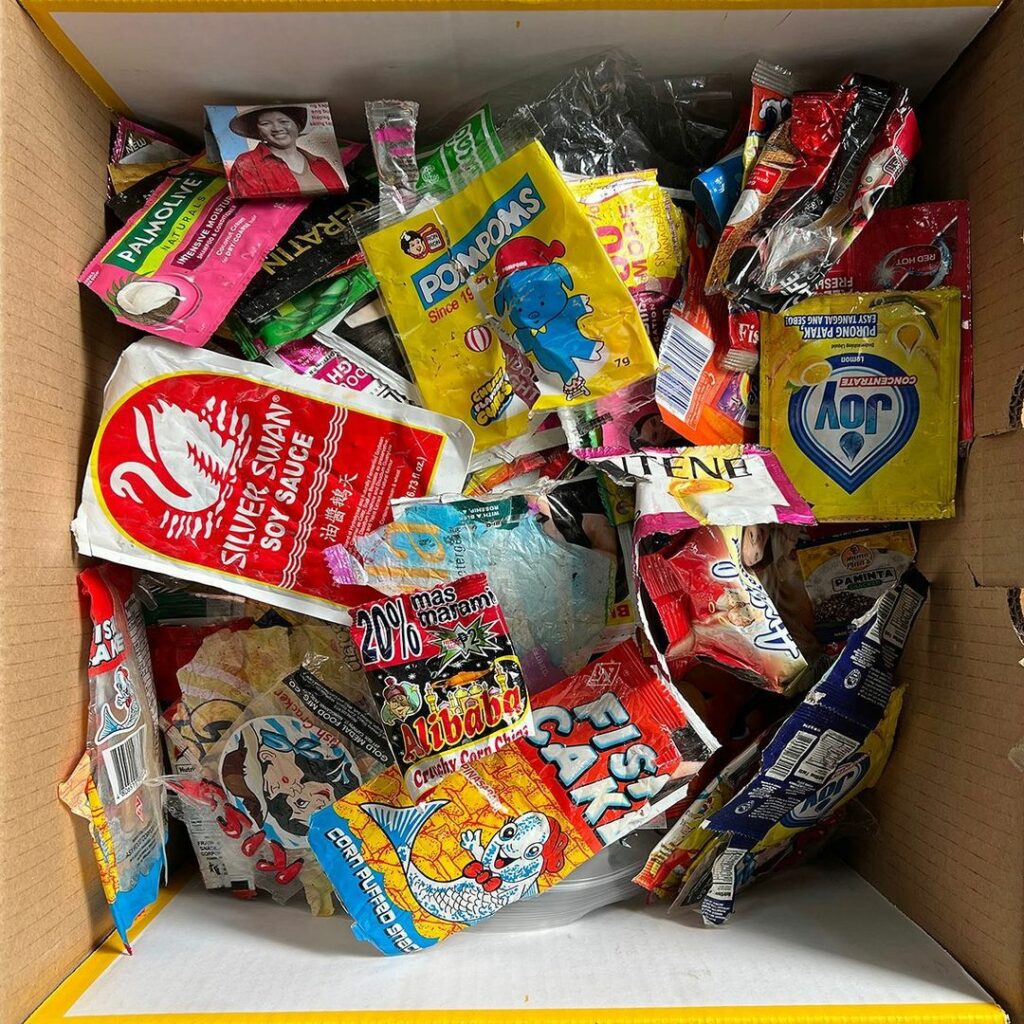
How many pieces of plastic sachets were you able to collect and what are some of the most common types of products they are from?
NS: We probably collected as much as four sacks of rice. The communities were so happy to give it to us because they have so much more than they can properly process. The interesting thing is that most of the plastic sachets were for basic, daily necessities like laundry soap, coffee, instant noodles, shampoo, soy sauce, and of course candies and cookies.
What are some insights you learned from collecting plastics from these areas?
NS: We noticed is that a lot of the plastic sachets were barely degraded, which suggests that so much plastic is going from households to canals and out to sea really quickly with barely any diversion.
We didn’t just collect trash but also gathered stories and research about plastic use and recycling in our community. We were connected with the municipal environmental officer of San Juan, Riza Abat, who told us about the beach cleanup and recycling activities of the various coastal communities.
[The plastic problem] isn’t going to be solved by shaming poor coastal communities for not knowing what to do with the waste of the imported products they are sold
However, plastic sachets aren’t recyclable, and since they are single-use, households consume way more than the local material recovery facility can handle. Households end up burning the sachets or else piling them up in empty fields or on the side of the road, and the next rain washes them all into the rivers and sea.
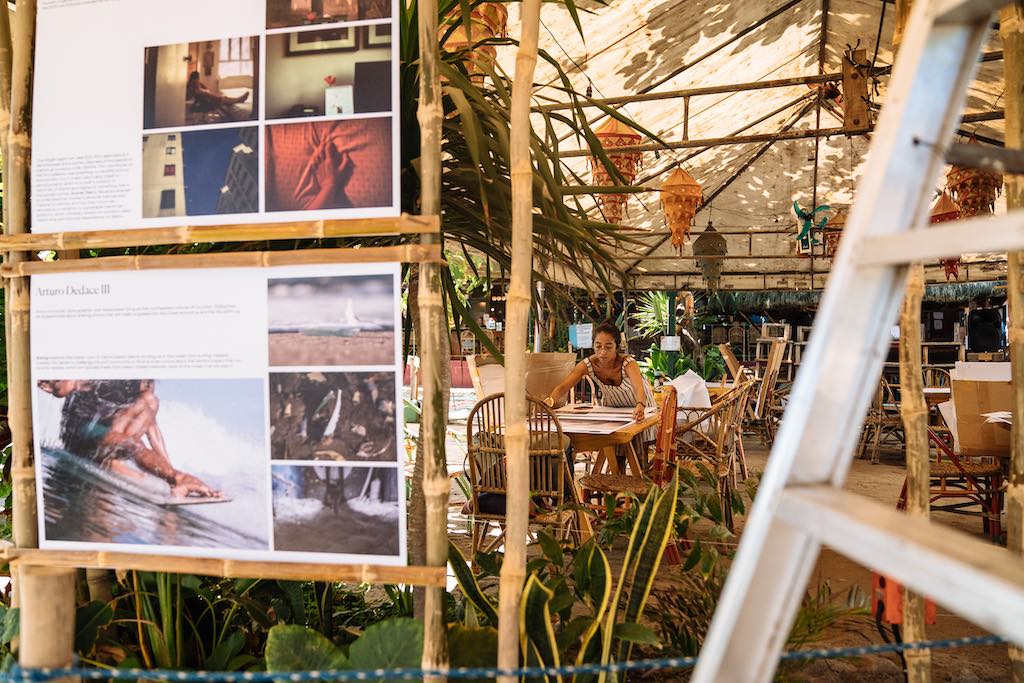
This means that disposing of and recycling it properly is a behavioral and logistical adaptation that won’t happen on the grassroots level overnight. There really needs to be more intervention and support from the national government level and most importantly the multinational companies that produce all these wasteful and unsustainable products.
In theory, we have good laws about recycling and waste disposal, but these haven’t been implemented. Most municipalities don’t even have a sanitary landfill, which is the law! So many remote communities don’t even have a trash collection system; what are they supposed to do with their trash?
There are good examples of towns that have taken it on themselves to deal with the plastic problem, but we shouldn’t be relying on individual responsibility to deal with this issue. It isn’t going to be solved by shaming poor coastal communities for not knowing what to do with the waste of the imported products they are sold. It is a national, international, and global problem that demands collaboration and accurate assessment of accountability.
Barker often works with scientists on this project to make sense of and assess the impact of plastics in the ocean. For this leg, would you know if she’s working with any local scientists particularly to examine the areas where the plastics were derived from?
NS: We basically did her research for her here in La Union and sent her a 12-page report on plastics in the Philippines
We also made sure to tell her of the resourceful and inventive ways that Filipinos reuse and upcycle plastic waste in their own ways, from reusing paint buckets for water or turning neon green soda bottles into flowers to decorate their gardens and storefronts.
This series by Mandy is part of a group exhibit by Emerging Islands. How did EI go about selecting artists and photographers to go with Mandy’s work for this exhibit?
HRM: I have this growing document of photographers whose work I love. David Loughran, our curator, really pushed me to take on the selection of work for this project. At the time, we didn’t know we’d turn it into an exhibition; we just started with what we wanted to say as a group, and what issues we wanted to take on, and I tried to find projects that would expand our understanding of waterways beyond plastic, and the breadth of stories they tell.
I narrowed the works down to photographic projects around the Philippines and Southeast Asia. The Banda Journal, in particular, was a body of work that I really wanted to share with more Filipinos.
The scars of colonization continue to exist in our islands. Muhammad Fadli’s project on the long term effects of colonization on the Banda Islands in Indonesia changed the way I see the land and the water: things that they remember, things that get washed away.
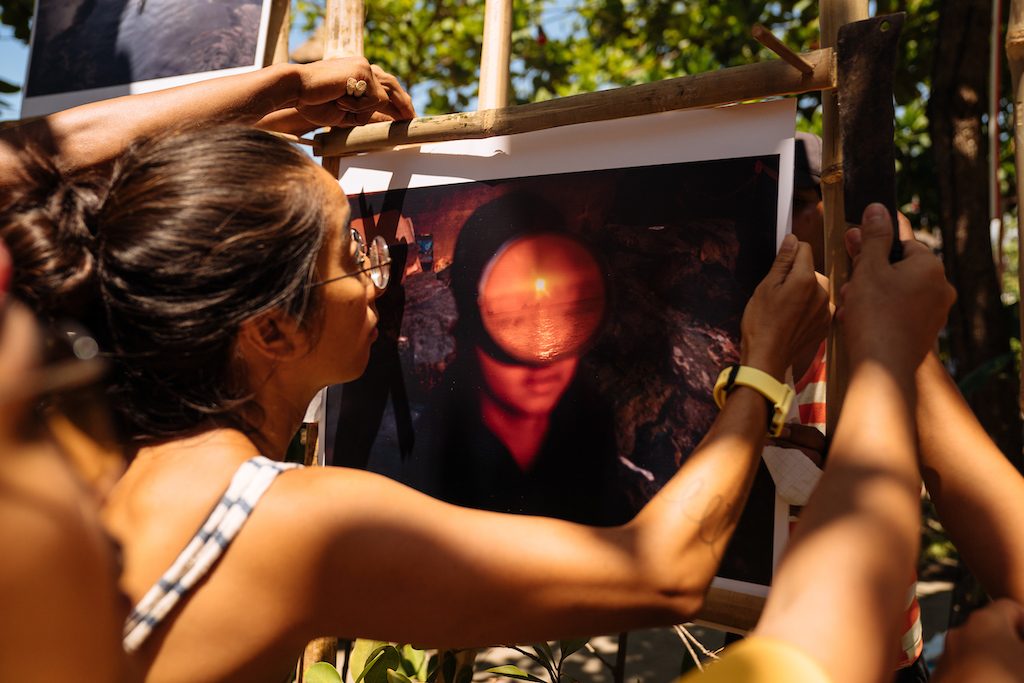
‘Langit, Lupa, Impiyerno’ by Geric Cruz is a work that I feel close to because Manila Bay is such a part of my own identity as a Manilenyo. I’m always looking for bodies of work from the Philippines that help me make sense of what I see every day. Cruz’s work always does that for me; he’s one of those photographers that make me feel like I do not know anything about photography.
In the same vein, ‘Mekong, Mother of Rivers,’ searing work by Huiying Ore, has always stayed with me. Her imagery of this spiritual body of water being dammed reminds me of the urgency of the threats that our waters face.
What do you hope audiences take away from the breadth of work presented in this exhibit?
HRM: More than anything, we hope that after people come to the exhibit, they can look at water differently. Personally, looking at these works reminds me that these waterways are connected—and they connect us.
Riza Abat of San Juan, La Union’s Municipal Environment and Natural Resources Office: If all the tourists can at least bring their waste home with them; don’t leave it on the beach. They are not required to clean the beach, but if they go to the beach, whatever waste you generate, take it home with you. Those are little acts towards environmental conservation. If we combine our little actions, it has a big effect.
NS: Water is a mirror to all of our relationships with each other and the world, including the non-human community we share it with. It traces our migratory movements, our trade relations, our wars, and also our history of exploitation and extraction.
Plastic is an oceanic problem, in that sense, a true universal reality, like water. By reconnecting with the waters that give us life, we can see our place in the ecology of this planet, and find better ways to respond to the consequences of our actions.
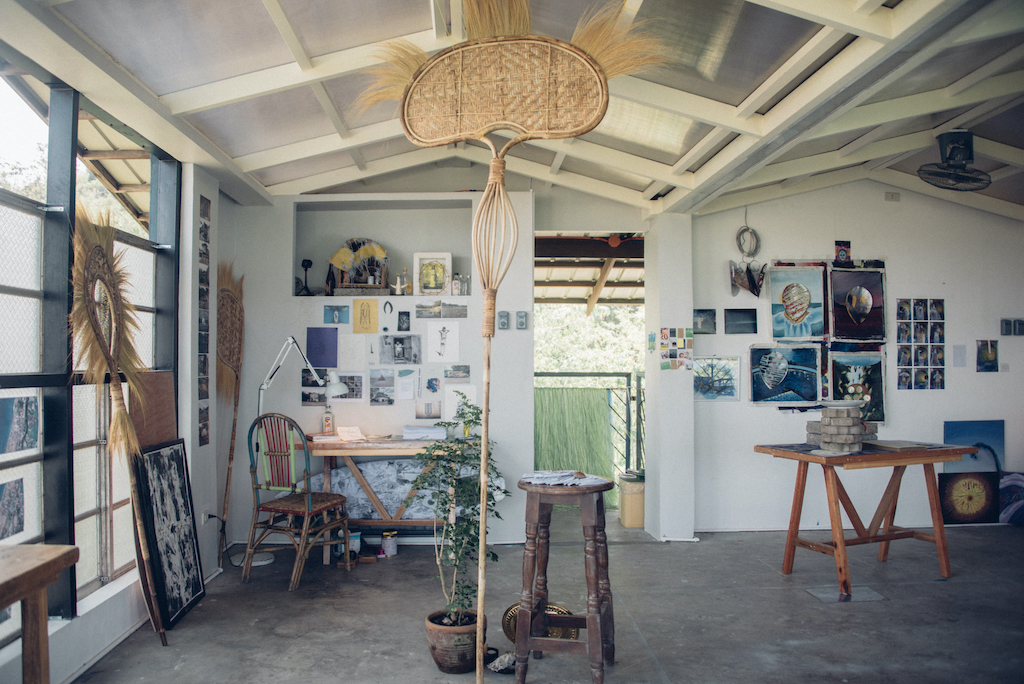
As an art collective, how do you manage to do just that: combine advocacy and art?
DL: Our work at Emerging Islands means connecting artists to ecological issues. Many artists do work around the environment already, and in that sense, they already have an advocacy. Some have yet to find their footing in that regard so we try to get to know our residents to understand their personal histories so that we can gently nudge them towards a compelling context for them to take on, which hopefully becomes a ground spring for future work.
This was the main intent for our student photography workshop, ‘Plastic Passages,’ where we mentored eight students through an intensive process so they could, through their photography, do some storytelling around the environmental issues that spring from their personal encounters with their own place.
We hope to do more workshops like these in the future, and open them up to students beyond Metro Manila so that storytellers from around the archipelago can explore these questions and issues of identity, community, and ecology with us.
Any EI projects in the pipeline that we should anticipate?
DL: We are currently working with the painter and seafarer Joar Songcuya, who is working on a project to tell stories around the experience of Filipino seamanship. We also have our first Filipino diaspora resident, Andi Vicente, coming in soon.
“Follow the Water” is currently on view at Flotsam and Jetsam Hostel grounds in San Juan, La Union.


